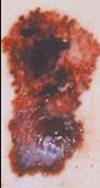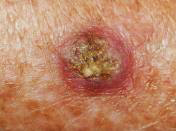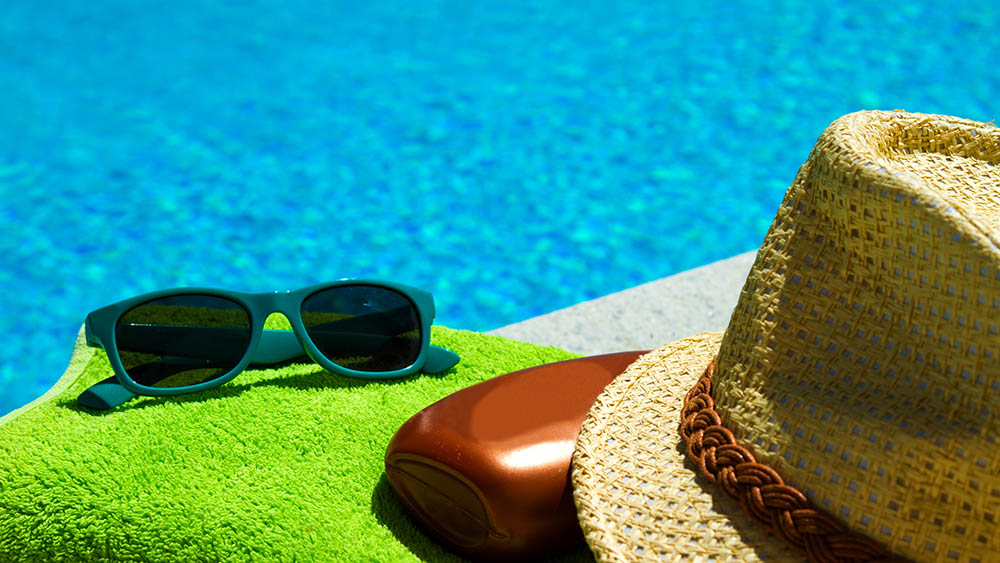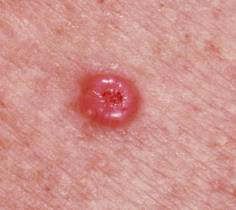The fight against skin cancer starts with awareness of a problem and how to prevent it.
Skin cancers, in general, represent the most frequent human cancer. The incidence of various types of skin cancers is increasing all over the world.
Skin cancers are a problem in Europe, but also in Portugal. In Portugal, it is estimated that in 2019, more than 13.000 new cases of skin cancer will be diagnosed and more than 1.000 will be new cases of melanoma.
In the US, recent data estimate that the probability of a Caucasian person developing skin cancer over a lifetime is 1 in 5 people! The probability of developing a melanoma of 1 in 50 people!
Skin melanoma is the 19th most common cancer in men and women. There were nearly 300.000 new cases in 2018. Melanoma often affects young adults. Global mortality from melanoma at 5 years in Western Europe is around 15%.
Non-melanoma skin cancer is the 5th most common cancer in men and women, with more than 1 million diagnoses worldwide in 2018, although it is likely to be an underestimate.
Skin cancers can, for the most part, be cured if detected and removed early enough.
TYPES OF SKIN CANCER
There are different types of cancer: 1) Melanoma; 2) Non-melanoma: Basocellular and Spinocellular.
 O MELANOMA it is the least common type, but also the most dangerous. It can affect people of any age, unlike the other types, which are more common in the elderly. It presents itself as a very dark “sign” that has developed irregular edges or different colors over time; or as a fast-growing, pink or reddish lump.
O MELANOMA it is the least common type, but also the most dangerous. It can affect people of any age, unlike the other types, which are more common in the elderly. It presents itself as a very dark “sign” that has developed irregular edges or different colors over time; or as a fast-growing, pink or reddish lump.
It can arise from an atypical "sign" (atypical nevus) that has changed, or as a "de novo" lesion, especially in skin with many "signs" (nevi) or lentigines (sunspots similar to freckles) or in skin with a history of sunburn.
It can spread rapidly in the form of metastases, so immediate surgical treatment is required.
O BASAL CELL CARCINOMA it is the most common type of skin cancer, but also the least dangerous.
It typically presents as a raised, flesh-colored nodule with shiny edges and a pearlescent appearance, a spot or sore that does not heal, or a slightly hard, rough lump that grows slowly over time. If left untreated, it can ulcerate and invade deeper tissues.
 O SPINOCELLULAR CARCINOMA it is the second most common type of skin cancer. It occurs on areas of skin that have been heavily exposed to the sun, such as the face, scalp and back of the hands. It presents as a hard nodule that can grow rapidly and become ulcerated and exudative.
O SPINOCELLULAR CARCINOMA it is the second most common type of skin cancer. It occurs on areas of skin that have been heavily exposed to the sun, such as the face, scalp and back of the hands. It presents as a hard nodule that can grow rapidly and become ulcerated and exudative.
It can spread rapidly to the nodes and internally (metastases), especially in more advanced lesions, located in the lips, ears, hands and feet or in immunocompromised individuals. Early surgical treatment to remove the lesions is essential.
 As ACTINICAL KERATOSES they are pre-malignant lesions (10-15% of cases can progress to squamous cell carcinoma) and occur more frequently in middle-aged and elderly people, in areas more exposed to the sun, such as the face, neck, ears, back of hands and leather hairy. They appear as scaly and wrinkled reddish-brown spots. They must be treated to prevent progression to cancer.
As ACTINICAL KERATOSES they are pre-malignant lesions (10-15% of cases can progress to squamous cell carcinoma) and occur more frequently in middle-aged and elderly people, in areas more exposed to the sun, such as the face, neck, ears, back of hands and leather hairy. They appear as scaly and wrinkled reddish-brown spots. They must be treated to prevent progression to cancer.
SKIN EXAMINATION
1) Examine the skin once a month;
2) Check for any alteration or suspicious-looking stain;
3) Inspect the entire body, in particular the sun-exposed areas (Examine: face, scalp, hands, neck, chest, torso, arms and armpits, buttocks, genitals, legs and feet. ).
To do this exam in the best conditions, choose a well-lit place, a full-length mirror, and possibly photograph it. What to look for?
1) “Signs” that have undergone any change in size, color or shape;
2) look different from the others;
3) asymmetrical or irregular edges;
4) rough or scaly;
5) various colors;
6) make you want to scratch;
7) Bleeds or releases fluid;
8) They have a pinkish appearance;
9) Looks like a wound, but doesn't heal.
SUSPICIOUS INJURY
More than 50% of patients, despite recognizing an injury as very suspicious, only try to obtain medical observation more than six months later. What can compromise the resolution of the problem, as skin cancer is treatable if diagnosed
at an early stage.
When treatment is delayed, the situation worsens, which can lead, in some cases, to disfigurement, other complications and even death. Therefore, the golden rules are:
1) Don't ignore the problem waiting for it to go away;
2) Don't wait to see how the problem evolves or try to solve it yourself;
3) Don't assume that “it must be nothing”;
4) Don't think it's not a priority issue;
5) Don't be afraid to consult your family doctor or dermatologist.
GREATER RISK
Skin cancer can appear in anyone, at any age. But there are people who are at greater risk:
1) Skin that is fair or prone to sunburn;
2) Suffered sunburn in childhood;
3) Had a great exposure to the sun throughout life;
4) Makes periodic exposures to the sun;
5) Use solariums;
6) Has more than 50 "signs" in the body;
7) Has a family history of skin cancer;
8) You are over 50 years of age;
9) Has undergone organ transplantation.
SOL
The Sun emits much of its energy in the form of heat and light. Radiation reaching Earth is filtered by the atmospheric ozone layer. Ultraviolet radiation (UVA and UVB) reaches the surface of the skin.
SKIN PHOTOTYPES
There are different skin phototypes, with different risks. Low phototypes, especially red-headed children, need much greater care with sun exposure than dark-skinned children.
SOLAR EXPOSURE CONDITIONS
Different conditions influence the quantity and quality of radiation received. The depletion of the atmospheric ozone layer, altitude and latitude, seasons and time of day influence UV radiation, and therefore the risk of sun exposure.
The reflective surfaces of the environment (long sandy beaches (sand reflects up to 40% of UV), snow (reflects up to 85% of UV), water (reflects 50% UV), 20% of UV is reflected in grass or cement) also have their impact.
Note that in the summer, during the bath, surface moistening causes an increase in transepidermal radiation permeation. Special attention is needed on cloudy and cool days, as they give an illusory sense of security, with omission of care can lead to sunburn (80% of UV passes through clouds).
Thus, a very useful parameter is the UV Index, as it is a practical indicator of the greater or lesser risk of sun exposure. The Portuguese Meteorology Institute publishes the ultraviolet index daily during the bathing season.
Usually in Portugal: October to April: 3 – 6 (hat, sunscreen and shades recommended) and May to September: 9 – 10 (hat, sunscreen, shades and sunglasses are recommended).
GREATER SUN EXPOSURE
In recent years, there have been behavioral changes in developed societies and the installation of habits of unregulated skin exposure to sunlight, due to the exaltation of the benefits of free contact with Nature, liberalization of stripping, dissemination of outdoor sports, regular attendance at beaches as a source of health, aesthetic enhancement of “tanned” skin, improvement in the living conditions of populations, vacations and leisure.
SOLARIUM
Solariums are tanning beds or tanning booths with action by the emission of UV rays and can damage the DNA of skin cells, providing a 74% greater chance of developing melanoma.
So it should be completely avoided as they are no safer than sun exposure and do not provide any health benefits. Several European countries have already banned the use of this equipment by children under 18
SUN BURN
After excessive sun exposure, the skin reacts:
1) Skin redness (4 hours);
2) Sensitive, painful, hot, swollen skin;
3) After the burn there may be fever, skin blisters and severe pain in the affected regions;
4) Later (24 and 72 hours), there is an increase in melanin synthesis, which leads to tanning.
In case of sunburn, some precautions should be taken:
1) Avoid further exposure to the sun;
2) Apply wet compresses with cold water;
3) Apply after-sun cream (calming and repairing effect);
4) Apply moisturizing repair cream (Vit A and E and zinc) 3 x day;
5) Protect the burned area with gauze, handkerchief or thin cloth;
6) Wear light cotton clothing (preferably white);
7) Remove objects that can accumulate heat: rings, necklaces, earrings, metals;
8) Short baths with little hot water;
9) Even after passing the burn: maintain hydration – it helps regeneration;
10) Do not burst bubbles;
11) Do not apply alcohol, butter or fatty oils;
12) Consider medication for pain/itching;
13) Contact the doctor whenever necessary.
HEATSTROKE
Heat stroke presents with fever, abnormal skin color, atypical sleepiness or agitation, intense thirst and/or weight loss, disturbances in consciousness, refusal or inability to drink.
How to prevent or act?
1) Avoid going out during hot hours;
2) Keep in a cool/refreshing environment (at least 3-2 hours/day);
3) Avoid staying in the car parked during hot hours;
4) Give water/liquids regularly (water, natural juices);
5) Light and fresh meals;
6) Loose, light and cool clothing;
7) If you have a fever: bathe with water 1° to 2°C below body temperature;
8) Contact the doctor whenever necessary.
Most sunburn occurs in youth and 75% of solar radiation is received up to the age of 20, knowing that the skin memorizes the aggressions of the sun throughout life, prevention is the focus. Adopting responsible behavior can prevent the 10 new cases of skin cancer that appear every year and which are a concern!
It is known that 53% of Portuguese only apply sunscreen when they feel their skin burning and 40% do not renew the application.
CARE TO BE TAKEN IN THE SOLAR EXHIBITION:
1) Slow and progressive sun exposure;
2) Pay attention to the news of the day: more risks when UV radiation index > 8;
3) Avoid the hours of greater sunshine: 12-16h, or better 11-17h;
4) Shadow rule: safe hours the shadow is bigger than us;
5) Look for shades and cool places;
6) Low phototypes: consider oral photoprotective medications (ancillary);
7) Wearing clothing: loose, light and cool; opaque/non-porous, dark tissue; long sleeves, with UV protection;
8) Wearing a hat with wide brims (ear protection);
9) Wearing sunglasses with UVA/UVB protection;
10) Increase your intake of liquids (water or natural fruit juices without added sugar, breast milk. Avoid alcoholic beverages and beverages with high sugar content)
SUN GUARDS:
Which one? Factor 30-50+, anti UVA and UVB, preferably with mineral filters and water resistant. Avoid too much fluid, spray, transparent or foam (false sense of security).
When to apply? Apply all over the body 30 minutes before leaving the house and before putting on clothes; A thick layer and ensure that it went all over the body; Attention: ears, folds, top of feet, neck; Reapply several times during the period of exposure to the sun (every 2 hours, more if wet or perspiring).
The filtering capacity of sunscreens is indicated by a numerical value, for example: the protection factor 30 means that with its application, the skin response needs 30 times more exposure time to observe an effect identical to that produced on non-skin protected. The maximum numerical indication: 50+. UVA and UVB protection.
There are Inorganic Filters (mineral filters, physical filters or sun blockers) and Organic Filters (chemical filters). Inorganic filters reflect incident radiation; have a broad and comprehensive spectrum of action; are very well tolerated; they can be noticed on the surface of the skin, due to its opacity; They are the most recommended when you want a safe and comprehensive filtration; Are recommended in the lowest phototypes, children, photosensitivity. Organic Filters: UV radiation absorption mechanism.
CHILDREN'S SKIN CARE
Children's skin is structurally similar to adult skin, but it is thinner and more vulnerable to aggression (UV); thinner and less melanized epidermis: easier sunburn; the biopathological alterations that condition the late effects are more pronounced.
It is advisable to avoid direct sun exposure in babies younger than 6 months; avoid exposure for long periods in children under 1 year up to 3 years.
For children under 6 months of age it is advisable to:
1) Do not use sunscreen (thin and sensitive skin, risk of reaction);
2) Avoid sun exposure;
3) Exposure only in the early morning and late afternoon, for short periods;
4) Use of light and fresh clothes (natural fabrics);
5) Shady and cool places;
6) Wearing sunglasses. In children from 6 months to 2 years, the use of a physical (mineral) barrier is recommended. For children over 2 years of age, it is advisable to use a child protector (mixture of physical and chemical filters) that is water resistant, tear-free and hypoallergenic (avoids reactions). Before use, always test on a small area of skin, days before use.
SUNGLASSES
It is recommended to wear sunglasses with protection from ultraviolet radiation (UVA and UVB), which is not the case, in most cases, with the glasses that children wear for play.
Glasses, if they do not have the ability to filter out ultraviolet radiation, can be highly harmful, since they reduce the discomfort caused by the intensity of the radiation, making it easier to see the light and, consequently, increasing harmful exposure.
Author: Carolina Venda, General and Family Medicine Internal Physician at USF FaroI, ARS Algarve.




















Comments